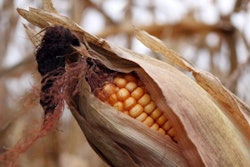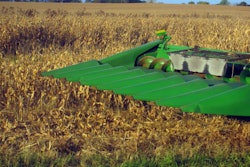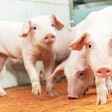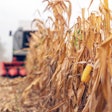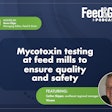
Biomin conducted 73,692 analyses on 18,757 finished feed and raw commodity samples from 72 countries for its World Mycotoxin Survey 2017.
The survey results provide an insight on the incidence of aflatoxins (Afla), zearalenone (ZEN), deoxynivalenol (DON), T-2 toxin (T-2), fumonisins (FUM) and ochratoxin A (OTA) in the primary components used for feed which include corn, wheat, barley, rice, soybean meal, corn gluten meal, dried distillers grains (DDGS) and silage.
They survey found that 62 percent of samples contained at least one mycotoxin present in sufficient concentrations to pose a risk to animal health or performance.
Seventy-one percent of samples contained two or more mycotoxins. Multiple mycotoxin contamination of feed presents additional problems, as certain combinations of mycotoxins are known to have synergistic effects that aggravate the negative consequences for animals.
“The reality is that you’re rarely, if ever, dealing with a single mycotoxin contamination. Mycotoxin contamination typically involves multiple mycotoxins, which can magnify the harm to farm animals,” said Ines Taschl, mycotoxin risk management product manager at Biomin. “The best way to protect your animals is to select a mycotoxin solution that relies on multiple strategies to counteract different types of mycotoxins.”
Because of the powerful sensitivity of state-of-the-art detection tools, Biomin said, it is no longer sufficient to talk about the mere presence of mycotoxins; concentration levels must be considered.
The overall risk level for a particular region is determined by the percentage of mycotoxins which exceed the risk threshold levels for livestock. The risk thresholds are based on worldwide practical experience in the field and in scientific trials that were conducted to reflect as closely as possible field situations and take into account the most sensitive species for each mycotoxin.
The average risk levels used as a basis do not preclude specific, severe instances of mycotoxin contamination in farm or fields locally, nor do they account for the negative impacts of multiple mycotoxin presence.
Share this Image On Your Site




